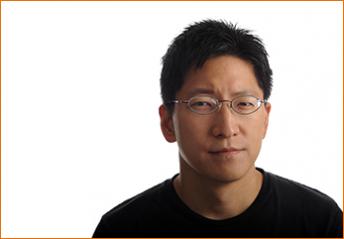
Scientific Discipline
Neuroscience
Related Links
Host Institution
Janelia Research Campus
Current Position
Dr. Lee is a group leader at the Janelia Research Campus.
Current Research
Mechanisms of Learning During Natural Behaviors
Research
Biography
When Albert Lee first started wondering how the brain works, he was surprised to find that the answers to his questions could not be found in books or scientific journals. His curiosity persisted, and eventually drove him to a career in neuroscience, where today he is seeking his own answers in the laboratory.
He is drawn to big questions, such as how animals learn, store, and recall specific items and events. As he investigates these processes, he is also creating new research tools that broaden the scope of the questions he and his colleagues are able to address.
Lee’s research focus is the neural basis of learning and memory. In mice and humans, an area of the brain called the hippocampus contains cells that are active in specific locations. In a rodent, “place cells” in the hippocampus help the animal create an internal representation of a new environment. Studies of place cells in rats and mice could help scientists better understand how learning occurs in the human brain.
Until now, scientists who wanted to measure learning inside individual cells were limited to doing so in stationary animals. If they wanted to test for learning in the brains of active animals, they had to take a step back and measure the activity from outside of the cells. Now, however, Lee and his colleagues have developed techniques to record from inside a single neuron in active animals. Their techniques can be employed to show how synapses—connections between neurons—change as rodents move, sniff, and interact with their environment.
Lee graduated from Harvard in 1994 with a degree in chemistry and physics. When he decided not to go to graduate school in physics, he spoke with some of his colleagues and became interested in what he was hearing about neuroscience. Lee explains, “I thought that people pretty much knew how the brain worked already—it’s just that I hadn’t taken those classes or read those books. I tried to look up questions that I had, and I realized that they weren’t really solved yet.”
He entered graduate school at MIT and studied under Matthew Wilson for a PhD in neuroscience. In Wilson’s lab, Lee began to study place cells, recording the activity of neurons in the hippocampus to explore the relationship between place cells and spatial memory. Wilson’s lab was an ideal place to do this work, because just a few years earlier, Wilson had helped develop a technique to record the activity of groups of about 100 neurons in freely moving rats.
Lee brought the skills he learned in Wilson’s lab to Michael Brecht’s lab at the Erasmus Medical Center in the Netherlands when he started his fellowship there in 2004. Later, he would move with Brecht’s group to Humboldt University in Berlin. When Lee arrived, Brecht was using the whole-cell recording method to measure the internal activity of neurons in rats that were not allowed to wander freely. Lee combined his previous work with Wilson with Brecht’s expertise in whole-cell recording, and the team successfully recorded whole-cell activity in freely moving rats. They published their results in the journal Neuron in 2006.
Their greatest challenge, Lee says, was steadying the glass recording electrode that is connected to the neuron. Their method involves fixing the electrode in place while it is connected to the neuron, then recording the cell’s activity while the animal runs a maze or pulls a lever. The electrode must stay in contact with the cell for the recording to work, which gives them less than 10 microns of wiggle room. It’s a tricky means of measurement, one that he will continue to develop at Janelia. In particular, the method still fails too much for Lee’s liking. For instance, while the glass electrode is being fixed, it often moves a few microns—far enough to throw off the recording of neural activity.
Lee and his colleagues are trying to conquer this mechanical challenge in several different ways—work that includes the usual difficulties of technical development. “When we try different parts, they’re usually single devices, custom made for us,” Lee explains. “They have all the bugs of new equipment or new pieces.”
Ultimately, Lee wants the technique of whole-cell recording in active animals to change from novel to standard, thus allowing researchers to link the study of interactions between brain cells to the study of the behavior those interactions cause. Lee also expects that Janelia will provide him with opportunities to collaborate with colleagues whose knowledge and skills will complement his. Beyond recording whole-cell activity in rats and mice, he would like to actually manipulate those cells and entire neural circuits, and then trace how these changes affect behavior.
Lee says that Janelia, with its ample resources and commitment to technical development, is a fitting place to continue his research. “Structurally, it allows freedom from grant writing so you can spend more time on your research,” he says. "It also has an intangible quality because it’s a new community with new ways of doing things. So it will be exciting to see how it turns out and to be a part of it.”
Articles & News
Research Papers
Selected Research Papers




